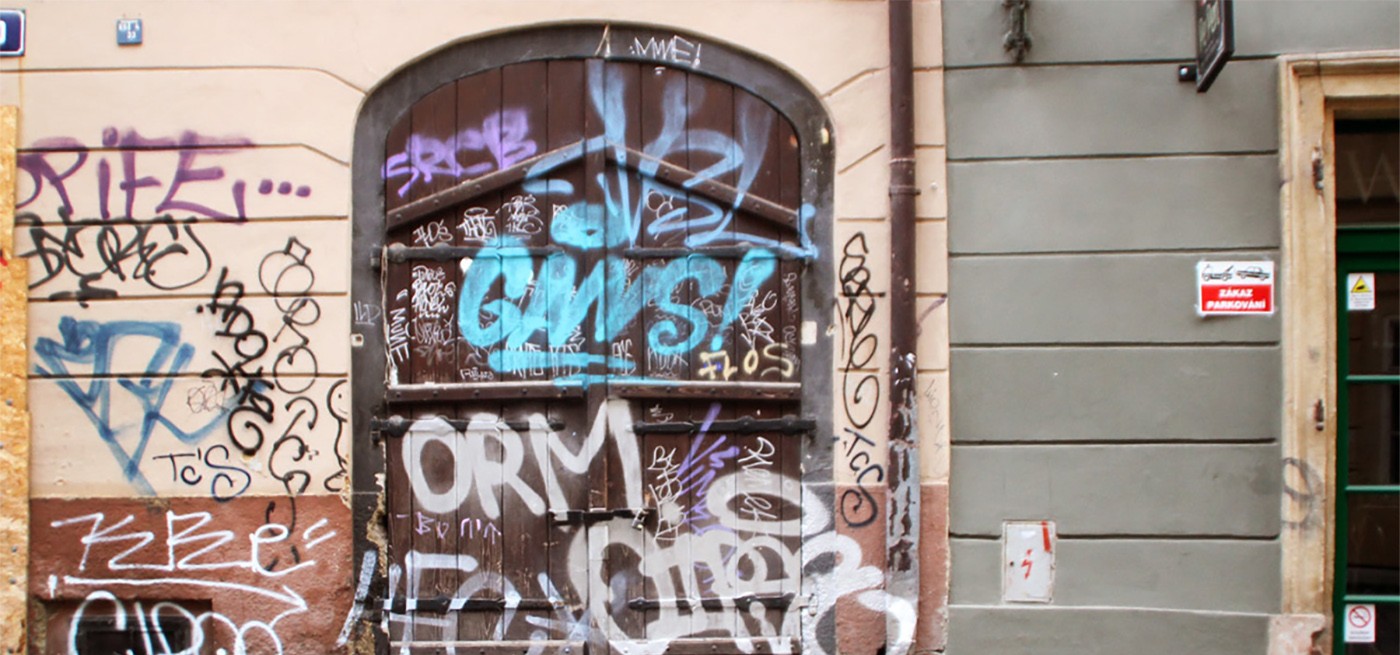Shanghai International Studies University (SISU) – July 10, 2015
One of Europe’s Picturesque Cities Battles the Stain of Graffiti
By Warrick Wang
PRAGUE — While walking through the cobble streets in Prague, people can see almost everywhere is sprayed on, whether on a building, a lamppost, a trash bin, or a bench.
David Lynch, film director, says graffiti is ruining the world and making our planet ugly.
According to the law in Czech Republic, graffiti artists risk up to six years in prison for damaging and defacing public property and utilities.
“I was punished one time back in the years, I was in half year probation, but I didn’t go to jail”, said Pavel, graffiti artist, whose last name is required to be kept secret. “It’s like the maximum you will get in Czech Republic.”
A report by daily Právo published on January wrote about the Tagbust, a new weapon in Czech against sprayers. The paper said, TagBust is a police database of the photographs of the sprayers’ tags and other works in the town. If a particular sprayer is detained, the program is able to compare his work with the database and assess where his style as well as the types of writing and lines are identical with other works.
The program has already helped find a 19-year-old vandal guilty of having sprayed tags on 112 facades in Breclav. He confessed to the vandalism, Právo writes.
“I think the graffiti is art actually, but the owner of the house may not think so, it’s about the private property.” said Martin Ehl.
“This is breaking the law,” the Mayor of Prague’s 5th district Miroslav Skaloud said, “They say it’s a form of self expression, but it’s like somebody saying he wants to express himself by hurting or damaging another person. These sprayers are painting on walls that belong to somebody. Alright, so they say those walls are gray and drab. But they could just as well say my car or my coat is too gray and dull and they want to put some color on it. No, this is definitely breaking the law and has to be punished.”
Pavel has anticipated in graffiti paintings for 23 years. In 1992, he came into contact with graffiti arts in Belgium and Serbia. “I painted my name on the subway and train, didn’t know about crews, 3D arts or literal words.” Then one year later after he went back to Prague, he met with artists from Germany, and recognized the concept of graffiti. “I trained myself at that time, and built my crews, started to compete with others.”
Amateur graffiti artists start with theme like the ancient Rome, or just their names. “Really for us, graffiti artists, we don’t touch political things. At least, that’s not my intention to write something political.” said Pavel.
Pavel said date back to 90s, he knew almost all the other graffitists in Prague. According to him, around 100 people now are active graffiti painters in Prague, 200 people or more write from time to time.
The Graffican Graffiti Shop, where Pavel and a lot of graffiti artistss usually visit in Prague, several graffiti writers agree that they just express their opinions and feelings with some color on the wall, more like an entertainment.
According to report written by Jamie Gottlieb in 2013, the TSK Praha manages and cleans transport infrastructure, including roads, streets and tunnels. The Monument Care Department focuses on removing graffiti from the historical center of the city, but the department doesn’t clean all of the graffiti in the area.
Private owners of buildings in the historical center care for their properties without any subsidies from the city to clean graffiti.
Some communities took matters into their own hands in an attempt to eradicate graffiti from their public space. Prague 6 started the “Stop Graffiti” program, which immediately removes graffiti within 24 hours.
Actually, Prague government designates legal walls for artists to paint, but those legal spots really can meet those artists’ demands? Legal walls may fail to excite some artists – “It’s the tiger in a cage v the tiger running free through the jungle,” says one.
“Of course I would prefer places like trains and metros, those paintings are supposed to be seen by the others” said Pavel.
“Legal painting? It’s just not the same feeling,” says Glynn Judd, a former train writer who now only paints in legal spots since his “NOIR” tag had him thrown into prison. “Graffiti is always about being slightly naughty … It’s a different mindset from painting legally.”
“They can clean it like 5 minutes, what’s the big deal?” said Pavel. “I know it’s illegal, but I couldn’t understand why the punishment is so severe.”
According to Pavel, it has been a long time for him not writing on the wall. He decided not to paint any more and now he takes graffiti design as a hobby.
“Good” v “bad” graffiti might continue to be disputed between fervid councilors, but Ben Eine, whose work was chosen by David Cameron as a gift to Barack Obama, says the public have moved on. “The whole world is covered in graffiti. No one cares. It’s just part of urban noise.”
 Education
Education